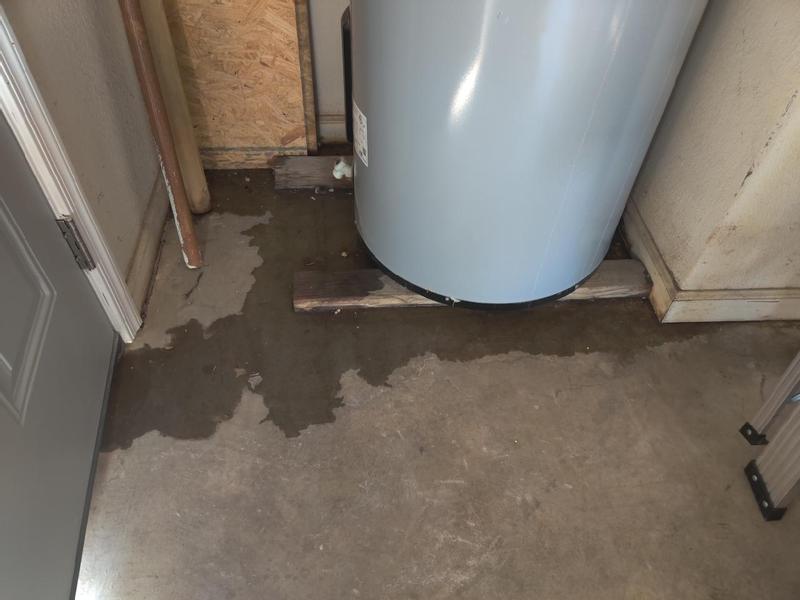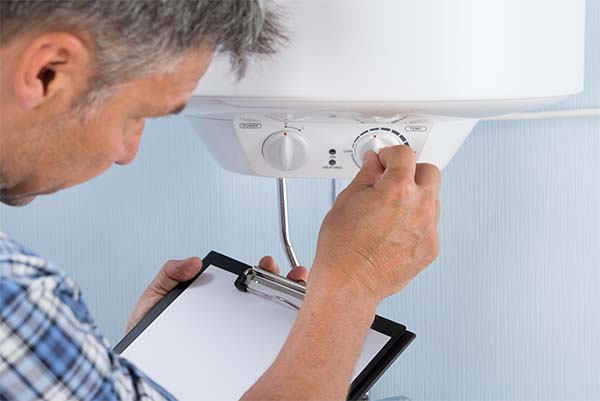Key Steps for House Owners Handling Faulty Water Heaters
Key Steps for House Owners Handling Faulty Water Heaters
Blog Article
The author is making several great observations related to What Do You Do When Your Water Heater Bursts? as a whole in the article down the page.

Whether it lies in the cellar or a separate area, broken hot water heater can trigger stress. A typical system holds 80 gallons, so an over night leak will certainly lead to a flooding. This causes major property damage with drenched wall surfaces and floors. Having no warm water supply is additionally troublesome. If you are handling these problems, make note of the following:
Call the Plumber
After doing the initial two security actions, you should call your plumber ahead immediately to take care of a fractured water heater. Remember that your system will not just conk out dramatically overnight. There are normally indicators that your aging hot water heater has debris build-up in the inside. Make note of the following:
Instead, as quickly as you find these indicators, have actually a professional come to inspect your water heating unit storage tank. Generally, water heating systems have a life-span of regarding 8 to 12 years.
Cut Off the Cold Water Supply
Cut off the containers tap water supply from the source. This goes from your major water line into the storage tank. When your storage tank remains in good condition, the cold water quits filling up when the tank is full. Given that it is dripping, the water will certainly proceed to move. Shut the shutoff discovered at the top of the heating unit. Turn this clockwise to shut it off. You need to turn off that main water supply line outside your building if you can not locate it or reach it.
Shut Down Power Source
Prior to calling the plumber, shut off a gas hot water heater by turning the temperature dial. This is generally located on top of the thermostat. Switch off the circuit breaker if you have a version that runs on electrical power. This will stop electrocution, particularly if there is a leakage as water is a conductor. Generally, the heating element turns off when the water strikes a particular temperature. With a damaged tank, it might malfunction. Cutting it off ensures you stay secure.
Tidy up Residential property
After calling the plumber, record damage by taking notes and photos so you can declare your homeowner's insurance. Eliminate any type of standing water to stop mold and mildew as well as mold development. If you have a completely submersible water pump, utilize that to drain the water.
Keep in mind, if you notice any type of concerns with your water heating unit, call the pros right away. You can not take this problem gently due to the fact that a malfunctioning thermostat can raise water temperature to a dangerously high degree, leading to accidental burns.
After doing the very first 2 safety and security steps, you need to call your plumber to come right away to deal with a ruptured water heating unit. Instead, as quickly as you detect these signs, have a specialist come to examine your water heater storage tank. Before calling the plumber, closed off a gas water heating unit by transforming the temperature dial. If you have a submersible water pump, utilize that to drain the water. Keep in mind, if you notice any kind of issues with your water heating unit, call the pros right away.
8 REASONS YOUR HOT WATER HEATER IS NOT WORKING & HOW TO FIX
Water Heater Problems & Solutions
Loose or Damaged In-Line Valve
Unlike a water leak near the bottom of your water tank, a water leak on top of your system can be easily fixed. A common cause of water tank leaks includes a loose in-line valve. This is a handle that is located at the top of the water tank that is engineered to activate or deactivate the flow of water. To fix this problem, you will need to secure the nut that holds the ball or in-line valve in its location. If the leak becomes more severe once it is tightened, you will be required to travel to your local hardware store to purchase a new in-line valve for your water heater.
Damaged Pressure Relief Valve
Most types of water heaters are equipped with a pressure relief valve that is engineered to discharge pressure from the water tank when it becomes too high. If this valve on top of your water heater begins to leak, we recommend purchasing a new one online or from your local store. The process of removing and replacing pressure relief valves is not complicated.
No Warm Water
If you have an electric water heater in your home, the most typical cause of a lack of warm water is a broken heating element. Your water heater is equipped with two heating elements that are tasked with heating incoming water in the water tank. Once a heating element begins to malfunction, you will have little to no hot water to use for showering, cleaning, and laundry.
Low Supply of Hot Water
Are you continuously running out of warm water? This issue may be a byproduct of a cracked dip tube. This tube is engineered to push cold water to the base of your water tank to be heated. Once a crack or hole begins to form in the dip tube, the incoming supply of cold water may be released near the top or middle of your tank. As a result, the cold water on top of the tank will be sent to the faucets and showers in your house. This hot water heater problem can only be fixed by replacing the dip tube on your system. Since the process of installing a new dip tube is complex, we recommend calling a certified technician for help.
A low supply of warm water may also be a signal of excess sediment buildup in your water tank. As your water heater reaches the middle of its life cycle, minerals in water including magnesium and calcium will begin to collect at the base of the water tank. As the minerals continue to grow, there will be less room in the water tank to store hot water. To resolve this problem, flush your water heater to remove the excess minerals.
Water is Too Warm or Cold
If the water in your shower feels uncomfortable hot or cold, you can adjust the temperature of your water by changing the settings on your thermostat. Setting the temperature to 120 degrees Fahrenheit may help you save money on your utility bills. This is an excellent temperature to use if you’re worried about scalding or skin irritation. Does this temperature feel too cold? You may also adjust the thermostat to 140 degrees Fahrenheit to make your showers more pleasant. If your hot water heater is not working when you change the temperature, this is an indicator of a broken thermostat. Immediately find a certified plumbing or heating contractor in your area to repair or replace your thermostat.
Low Water Pressure
Low water pressure is not always caused by a malfunctioning water heater. If you live in an older home with smaller water pipes, the flow of water will be restricted prior to reaching our kitchen or bathroom skins. The only way to eliminate this hot water heater problem is to connect new ¾-inch water lines to your system. Another type of problem that may negatively impact your water pressure includes calcium deposits in water pipes.
As magnesium and calcium begin to form in your pipes, the diameter of your water lines will become smaller. As a result, the warm water from your water heater will not be able to travel in an efficient manner to your sinks or appliances. Since the process of replacing water pipes includes removing drywall, an average homeowner that does not have a plumbing license will not be able to fix this hot water heater problem.
https://www.wmhendersoninc.com/blog/8-reasons-your-water-heater-is-not-working-how-to-fix/

We had been guided to that editorial about How to Avoid a Broken Hot Water Heater through someone on another website. Are you aware of somebody who is in to Water Heater Repair? Why not promote it. Thanks for your time. Kindly stop by our site back soon.
Ensure plumbing integrity; reach out. Report this page